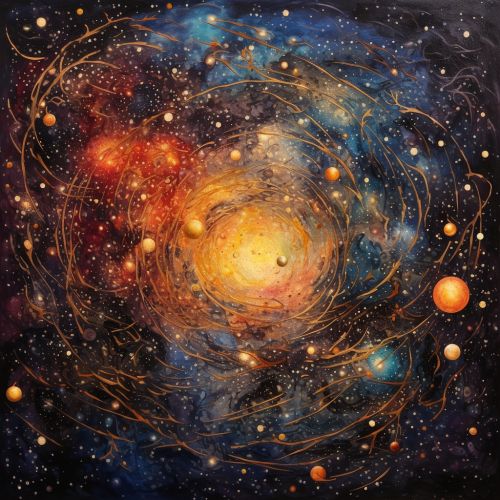Cosmological constant problem
Introduction
The cosmological constant problem is a fundamental issue in theoretical physics that has significant implications for our understanding of the universe. It is considered one of the most challenging problems in modern physics and has been the subject of extensive research and debate among scientists.


The Cosmological Constant
The cosmological constant, denoted by the Greek letter Lambda (Λ), was first introduced by Einstein in 1917 as a modification to his theory of general relativity. Einstein proposed the cosmological constant as a way to achieve a static universe, which was the prevailing view of the universe at the time. However, subsequent observations of the universe showed that it was not static but expanding, leading Einstein to abandon the concept and famously refer to it as his "biggest blunder".
The Problem
The cosmological constant problem arises from the discrepancy between the observed value of the cosmological constant in the universe and the value predicted by quantum field theory. Quantum field theory predicts a value for the cosmological constant that is many orders of magnitude larger than the observed value. This discrepancy, often referred to as the "vacuum catastrophe", is one of the greatest unsolved problems in theoretical physics.
Quantum Field Theory and the Cosmological Constant
Quantum field theory is a theoretical framework that combines the principles of quantum mechanics and special relativity to describe the fundamental forces of nature. According to quantum field theory, the vacuum of space is not empty but filled with virtual particles that constantly pop in and out of existence. These virtual particles contribute to the energy density of the vacuum, which in turn should contribute to the cosmological constant.
However, when physicists calculate the vacuum energy density using quantum field theory, they get a value that is vastly larger than the observed value of the cosmological constant. This discrepancy is often referred to as the "vacuum catastrophe" and is the essence of the cosmological constant problem.
Attempts to Solve the Problem
Over the years, many attempts have been made to solve the cosmological constant problem. Some of these attempts involve modifying the fundamental laws of physics, while others propose new theories of gravity or the existence of extra dimensions. However, none of these proposed solutions have been universally accepted, and the cosmological constant problem remains a major unsolved problem in theoretical physics.
Implications for the Universe
The cosmological constant problem has significant implications for our understanding of the universe. The cosmological constant plays a crucial role in the Lambda-CDM model, which is the current standard model of cosmology. The Lambda-CDM model describes the universe as being composed of ordinary matter, dark matter, and dark energy, with the cosmological constant being associated with the dark energy.
If the cosmological constant problem cannot be resolved, it could potentially undermine the Lambda-CDM model and our current understanding of the universe. This makes the cosmological constant problem not just a problem of theoretical physics, but also a problem of cosmology and observational astronomy.
Conclusion
The cosmological constant problem is a fundamental problem in theoretical physics and cosmology. Despite many attempts to solve the problem, it remains one of the greatest unsolved problems in physics. The resolution of the cosmological constant problem could lead to significant advances in our understanding of the universe and the fundamental laws of physics.
